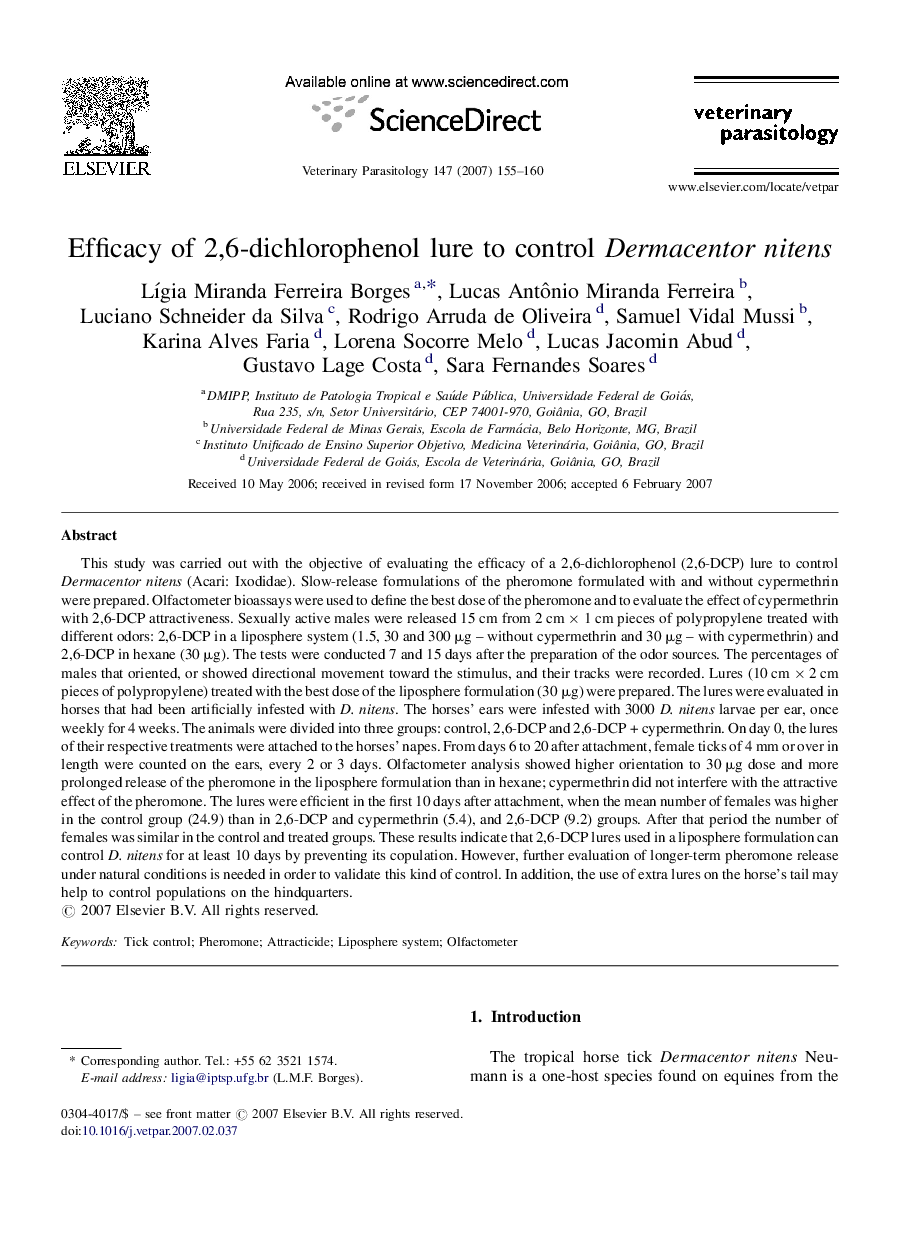| Article ID | Journal | Published Year | Pages | File Type |
|---|---|---|---|---|
| 2471937 | Veterinary Parasitology | 2007 | 6 Pages |
This study was carried out with the objective of evaluating the efficacy of a 2,6-dichlorophenol (2,6-DCP) lure to control Dermacentor nitens (Acari: Ixodidae). Slow-release formulations of the pheromone formulated with and without cypermethrin were prepared. Olfactometer bioassays were used to define the best dose of the pheromone and to evaluate the effect of cypermethrin with 2,6-DCP attractiveness. Sexually active males were released 15 cm from 2 cm × 1 cm pieces of polypropylene treated with different odors: 2,6-DCP in a liposphere system (1.5, 30 and 300 μg – without cypermethrin and 30 μg – with cypermethrin) and 2,6-DCP in hexane (30 μg). The tests were conducted 7 and 15 days after the preparation of the odor sources. The percentages of males that oriented, or showed directional movement toward the stimulus, and their tracks were recorded. Lures (10 cm × 2 cm pieces of polypropylene) treated with the best dose of the liposphere formulation (30 μg) were prepared. The lures were evaluated in horses that had been artificially infested with D. nitens. The horses’ ears were infested with 3000 D. nitens larvae per ear, once weekly for 4 weeks. The animals were divided into three groups: control, 2,6-DCP and 2,6-DCP + cypermethrin. On day 0, the lures of their respective treatments were attached to the horses’ napes. From days 6 to 20 after attachment, female ticks of 4 mm or over in length were counted on the ears, every 2 or 3 days. Olfactometer analysis showed higher orientation to 30 μg dose and more prolonged release of the pheromone in the liposphere formulation than in hexane; cypermethrin did not interfere with the attractive effect of the pheromone. The lures were efficient in the first 10 days after attachment, when the mean number of females was higher in the control group (24.9) than in 2,6-DCP and cypermethrin (5.4), and 2,6-DCP (9.2) groups. After that period the number of females was similar in the control and treated groups. These results indicate that 2,6-DCP lures used in a liposphere formulation can control D. nitens for at least 10 days by preventing its copulation. However, further evaluation of longer-term pheromone release under natural conditions is needed in order to validate this kind of control. In addition, the use of extra lures on the horse's tail may help to control populations on the hindquarters.
